There is nothing like homemade egg noodles or pasta. This delicate and tender noodle is light in texture, and once you add your favourite sauce, it becomes your favourite pasta meal!
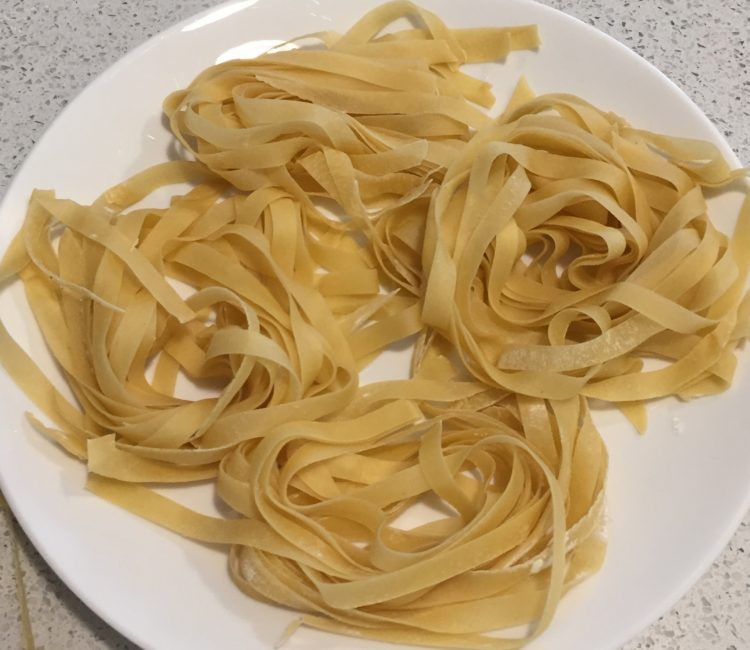
The Hungarian’s make their own egg noodles on a regular basis for various dishes, and soups. The shapes vary, from a simple fettuccine style, an extra fine long noodle, ravioli, and small diamond shapes, and spiral (csiga) shapes for soups.
Making homemade egg noodles are not as hard as what people think. This recipe only requires 3 ingredients, and your time. You can have fresh pasta for dinner within an hour. If you don’t have a pasta machine, use a rolling pin, and roll out the dough to about 1/8 thickness and using a sharp knife to cut the strips for fettuccine or rectangular shape for ravioli pasta.
Three Simple Ingredients:
Flour: regular all purpose flour is all you need
Eggs: adds texture, and flavour
Salt: is needed for flavour and preservation
Homemade Egg Noodles - Hungarian Style
RoseIngredients
- 1 1/2 cups flour
- 3 eggs
- 1/2 tsp salt
Instructions
- Place the flour on a clean work surface. Make a well in the middle of the flour with steep sides. Whisk the eggs in a small bowl and carefully pour into the well, and add the salt. Slowly and gently mix together with a fork. Gradually start incorporating the flour by pulling in the flour from the sides of the well. As you incorporate more of the flour, the dough will start to take shape.
- As the paste thickens, using your hands continue working the dough until it comes together. If the dough is too dry, add a little water; if too wet or sticky, add a little flour. It will be lumpy.
- Once you have the dough formed, on a clean surface, start kneading the dough and keep kneading until it becomes smooth and elastic, about 8 to 10 minutes. At this point, set the dough aside, cover it with plastic, and let it rest for 15 minutes. You can store the dough in the refrigerator for up to 24 hours, but allow it to return to room temperature before rolling it out.
- Divide the pasta dough into 4 even sections. Keep each section covered with plastic wrap or a clean towel while you work with each one so it doesn’t dry out. Flour the dough, the rollers of a pasta roller (or your rolling pin), your hands, and the worksurface.
- If using a pasta machine: Flatten 1 of the of the dough pieces between your hands or with a floured rolling pin until it forms a thick oval disk. If dough is sticky, dust the disk, the roller, and your hands with additional flour. Lay rolled out dough on a clean towel, and cover with another towel to avoid the dough drying out.
- With the roller on the widest setting, pass the pasta through the machine's rollers a few times until it is smooth. Fold the dough over into 1/3, and continue to pass through a few more times until the pasta is smooth again. Begin adjusting the pasta machine settings to become thinner, passing the dough through a few times at each setting.
- If rolling the pasta by hand: Flatten a dough piece into a thick oval disk with your hands. Flour a baking sheet for the rolled out finished pasta. Place the oval dough disk on a floured work surface, and sprinkle with additional flour. Begin rolling out the dough with a floured rolling pin working from the center of the dough outwards, constantly moving the dough and lifting it to make sure it's not sticking.
- The desired thickness depends on what you plan to use the pasta for. If you are using the pasta machine, you can determine the desired thickness. Most thickness tends to be about 1/8 inch thickness.
- To cook, bring a large pot of salted water to a boil and then add the egg noodles. Once the noodles rise to the surface no more than 1 minute they are cooked and drain immediately.
Nutrition
How to make the egg noodle dough:
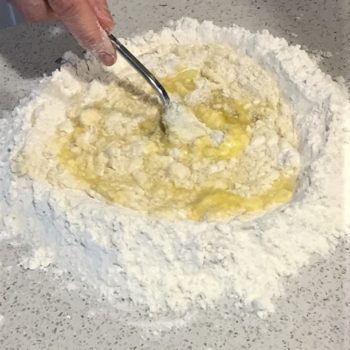
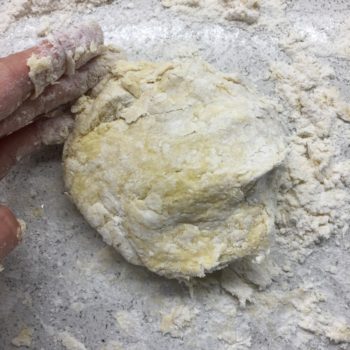
Begin by placing the flour on a clean work surface. Make a well in the middle of the flour with steep sides. Carefully add the beaten eggs into the well, and add the salt. Slowly and gently mix together with a fork. Gradually start incorporating the flour by pulling in the flour from the sides of the well. As you incorporate more of the flour, the dough will start to take shape. As the paste thickens, using your hands continue working the dough until it comes together. If the dough is too dry, add a little water; if too wet or sticky, add a little flour. It will be lumpy.
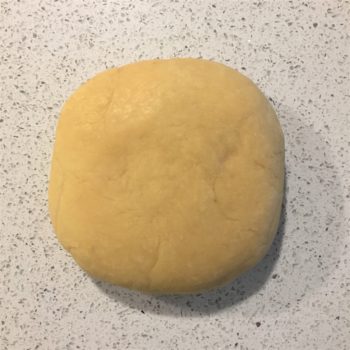
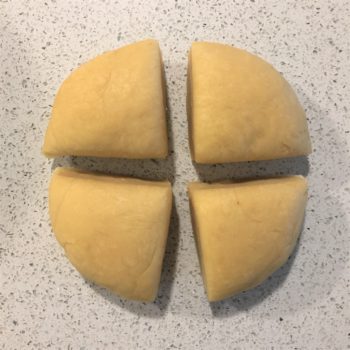
Kneading the dough: Once you have the dough formed, on a clean surface, start kneading the dough and keep kneading until it becomes smooth and elastic, like shown on the left, about 8 to 10 minutes. At this point, set the dough aside, cover it with plastic, and let it rest for 15-20 minutes. You can store the dough in the refrigerator for up to 24 hours, but allow it to return to room temperature before rolling it out.
Divide the pasta dough into 4 even sections. Keep each section covered with plastic wrap or a clean towel while you work with each one so it doesn’t dry out. Flour the dough, the rollers of a pasta roller (or your rolling pin), your hands, and the worksurface.
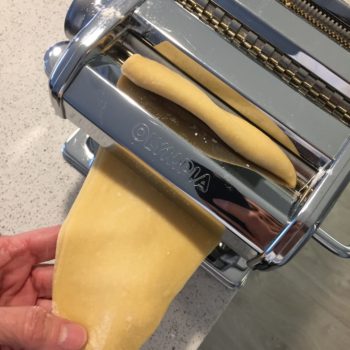
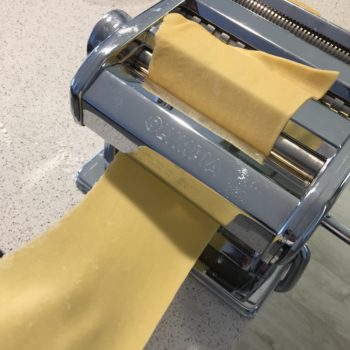
Using a pasta machine: Flatten 1 of the of the dough pieces between your hands or with a floured rolling pin until it forms a thick oval disk. If dough is sticky, dust the disk, the roller, and your hands with additional flour. Lay a towel out and place each rolled dough on the towel and cover with another towel to avoid drying out.
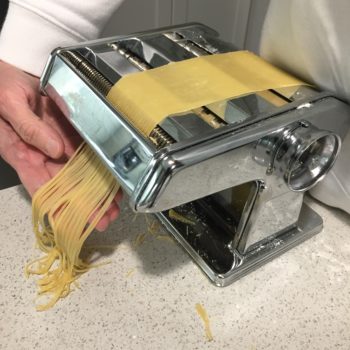
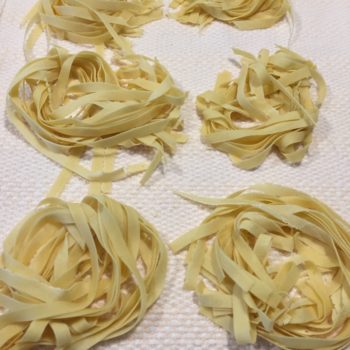
With the roller on the widest setting, pass the pasta through the machine’s rollers a few times until it is smooth. Fold the dough over into 1/3, and continue to pass through a few more times until the pasta is smooth again. Begin adjusting the pasta machine settings to become thinner, passing the dough through a few times at each setting. I rolled out the dough as far as #5 on the pastry machine.
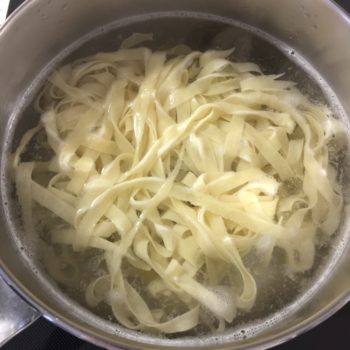
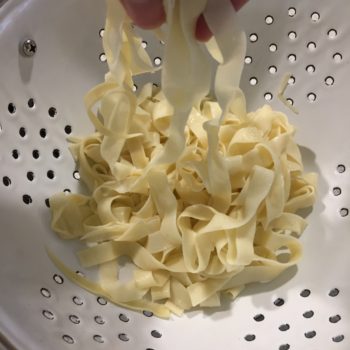
To cook, bring a large pot of salted water to a boil and then add the egg noodles. Once the noodles rise to the surface no more than 1 minute they are cooked and drain immediately.
Hungarian dishes commonly made with homemade egg noodles:
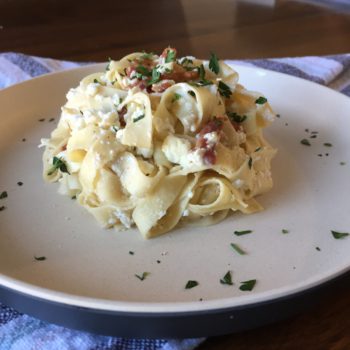
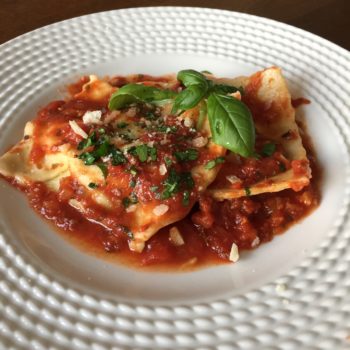
Each dish is made with this egg noodle recipe. The one of the left is the Cottage Cheese and Bacon recipe, and the one on the right is a Cottage Cheese Ravioli recipe.



